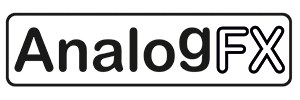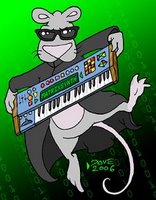Showing posts sorted by date for query Hard Sync. Sort by relevance Show all posts
Showing posts sorted by date for query Hard Sync. Sort by relevance Show all posts
Monday, November 24, 2025
WMD CLUTCH - Hi Hat Percussion Eurorack Module - In Depth Overview
video upload by WMDevices
As always, check with dealers on the right for pricing and availability.
"The long-awaited Clutch module is a dual sample player built specifically for creating dynamic, expressive hi-hat sounds through an immediately playable interface.
With two layers of samples, Clutch lets you blend dependable “bread-and-butter” built in hits with a massive library of sample pairs hosted on a memory card. The controls for the card based samples are always accessible and intuitively arranged, making it easy to dial in sounds quickly during performance or patching. And yes, you can load your own samples!
In this video, Alex goes through the module from top to bottom, demoing all of the controls and features Clutch has to offer. Starting with the connections, and ending with a jam using CV modulation, the built-in FX, and feel control to create a super unique groove in a matter of minutes. Clutch is a tool for creating the best quality and unique hihat and auxilliary percussion to your modular jams in a fun and intuitive way.
Chapters:
00:00 - Intro
00:10 - Quick overview
01:10 - Trigger inputs, mono output
03:20 - Surface A banks walk-through
06:24 - Pitch A
06:40 - Release
06:57 - A/B Blend
07:14 - Assignable knobs
10:30 - Effects Mode
14:00 - Feel Control
15:30 - CV Control / Jam Time
WMD designs electronic hardware for musicians longing for a balance of precision and exploration. Our quality control is the absolute finest, with service to match."
Update:
Performable, musical & “produced” sounding modular hi hats // CLUTCH from WMD
video upload by DivKid
"Here we have the eagerly anticipated CLUTCH from WMD. It's a dual layer, closed and open hi hat module based around the playback of samples. With 'samples' said ... you can swap them and turn this into a percussive sample player for non hi hats too - which we do in the video. There's built in FX, seriously impressive 'feel' and dynamics controls that are incredibly musical incredibly easily and a whole host of features to layer sounds, sit them in a mix and to perform with them."
Timestamps:
00:00 Hello & previews
01:35 What is Clutch?
02:43 Detailed feature run
Friday, November 14, 2025
Elmyra 2 firmware v2.4 – new features walkthrough
video upload by nyppy
"Get the update file here: https://neutral-labs.com/elmyra2
00:00 Intro
00:13 Improved sound quality
00:30 New delay
00:58 New and controllable reverb
01:43 Comb filter
02:18 Action confirmation
02:23 New multimode ladder filter
02:45 Oscillator hard sync
03:16 Voice stacking/tune follow
03:50 Diatonic and pentatonic scales
04:01 Quick octave switching
04:15 Knob motion recording
04:40 Super short envelopes
04:59 Quick mute
05:21 Outro jam"
The Queen of Industrial Grunge Got an Upgrade — Sophisticated Dirt!
video upload by Cinematic Laboratory
"#Elmyra2 v2.4 — What’s New and Improved Sound Engine
Higher sample rate and improved wavetable resolution → noticeably cleaner top end. New wavetables added. Overall mix saturation refined, with “soft” (122) now default. Knob value stability and tuning precision improved.
Filters
New comb filter (codes 3321/3322). RESO = damping, CUTOFF = delay time, with optional pitch tracking. Ladder filter reworked — now true multimode (LP/BP/HP) with higher quality. Ladder LP (331) is the new default filter. State-variable filter retains LP/BP/HP modes (341–343) but with improved gain staging, resonance, and cutoff ranges.
Delay & Reverb
Delay fully re-implemented → cleaner feedback, no lock-ups.
Added proper reverb engine controllable with delay knobs.
Code 441 = delay (default), 442 = new reverb, 4411 = legacy lo-fi reverb.
TIME = decay, FDBK = color, MIX = blend.
Dry/wet crossfade curve improved for smoother transitions.
Modulation
New MODP: oscillator hard-sync (orange LED, position 5).
MOD controls the synced oscillator pitch.
LFO1 knob-motion recording (code 2413) — record live movement of LFO rate. Sequencer output to LFO1 possible (243v).
Per-voice sequencer clock divider (11sv).
Digitally controlled envelopes in multiple short modes (221v → very short … 224v → disable). Detune MODP range expanded.
Scales & Chromatic Mode
New musical scales for chromatic mode: major, minor, major pentatonic, minor pentatonic (CHRM + 11–14). Scale selection now unified under the CHRM button. Knob-to-pitch mapping in chromatic mode is now linear and exact.
User Interface & Workflow
LED feedback overhaul — REC and PLAY flash to confirm code entry, sequence record, mute, and drone states. Quick mute/unmute voice (MODP + PG long press). Quick octave switch (MODP + double-tap PG).
Pink MODP LED at startup identifies firmware 2.4.
Touchpad LEDs more reliable during operation.
Drone and mute response feels snappier.
Under-the-hood Fixes
State-variable filter crash fixed (previously triggered by fast cutoff modulation).
Improved detune, filter, and delay behaviors under modulation load.
Sequencer timing more consistent with internal clock."
Sunday, November 02, 2025
Black Corp Kijimi MK2 sound exploration no talking
video upload by Ken Flux Pierce Fluxwithit
"Kijimi MK2 has landed in the studio and I am enjoying exploring its capabilities, quirks and raw analog sounds. This video is a no talking pretty raw exploration. exploring modulation and creating custom presets. All sounds were created from INIT to give a fresh slate.
Kijimi MK 2 is an 8 voice analog synth inspired by the RSF Polykobal from Black Corp's website
DEEP 8-VOICE ARCHITECTURE
Each of KIJIMI ’s 8 voices features 2 analog oscillators each with a square sub-bass oscillator, for buttery timbres with extensive sound design options. The sub-oscillator produces an octave lower than the combined VCO1 and VCO2 outputs, meaning you can tune two sub-pitches. Hard sync is available in VCO sync and VCO1-2 and 2-1 configurations for maximum flexibility. There’s also a noise source for adding bite and percussion components. A rich lowpass filter is built around the legendary 2140 chip and the ability to frequency-modulate it via VCO2, creates a full range of sounds from metallic and aggressive to subtle. Both filter cutoff and resonance are available as modulation destinations."
Sunday, October 26, 2025
SynTesla VCO Hz-OSC560 from Hans Zimmer's Giorgio III
video upload by SynTesla
"Here is a short demo of the Hz-OSC560 oscillator, the same one found in Hans Zimmer's gigantic synthesiser ‘Giorgio III’. Here I am making a quick hard sync patch of two oscillators.
Please forgive the poor musical performance."
See: Hans Zimmer Next Level Giorgio III Monumental 5U Modular System
Thursday, October 23, 2025
FOUR SEAS // A Multi-Voice Mega Wavetable Oscillator Powerhouse from Ferry Island Modular
video upload by DivKid
"Here we have Ferry Island Modular's first release 'Four Seas', which is designed, engineered and manufactured in Finland. It's a real power house of a sound source, suiting to quickly grabbing some waves to patch with or for deep sound design tweaking. Everything is knob/button per function with no menus, making complex behaviours, modulations and sounds simple to access. There's LOTS of examples in this video, see the timing index below for all that's covered ... yet I'm sure there's lots left to uncover with all the options this presents."
**TIMING INDEX // CHAPTERS**
Wednesday, October 22, 2025
The Florian Schneider Collection to Be Auctioned at JULIEN*S November 19
Note: links to listings are affiliate links for which the site may be compensated.
via JULIEN*S
"THE FLORIAN SCHNEIDER COLLECTION
Auction to be held at Musician's Hall of Fame & Museum, Nashville, on November 19
An incredible collection of more than 450 artifacts from the life and career of Florian Schneider, co-founder of the pioneer electronic band Kraftwerk."
Pics and videos featuring some of the gear below, and his Lederhosen for good measure (thanks greg!).
Update: the post has been fully updated with all the synth related gear. This may just well be the longest post to be featured on the site. I wanted to capture all the pics for all of the details including notes, scuffs, and of course serial numbers. It's an interesting look into what he used, the condition he keped his gear, in some cases, how he actually used his gear. Note the phonetics on the keys of the Casio CZ-101 and DX-100. Note the Midi Switch Box with a built-in speaker? What's that about? Note the camouflage key strap on the Korg RK-100 Remote Keyboard. Did he pick it out himself or did the keytar just come with it? Note the repeat midi controllers and the MIDI saxaphones. Wind was his primary instrument. You'll find a ton of the acoustic gear he used in the other listings. This is a fascinating insight into both what and how he used his gear.
Side note: there is no affiliate compensation for this post. The note at the top automatically shows for all posts with the Auction label.


Rack Mount Sennheiser VSM-201 Vocoder
Starting Bid $5,000
Estimate $20,000 - $40,000 USD
A late 1970s Sennheiser VSM 201 Vocoder with no serial number from the personal studio and collection of Florian Schneider of Kraftwerk (see images). While it’s said that only a few dozen of these Vocoders were produced, a few examples made it into the hands of forward-thinking musical artists including Herbie Hancock, Daft Punk, and of course, Kraftwerk, who used a VSM-201 like this on their albums Man Machine (1978) and Computerworld (1981). The VSM-201 has an intelligible sound that has not yet been bested by modern gear. Includes power cable. This VSM-201 has been removed from its wooden enclosure (which bears the serial number plate) and modified with a metal rack mount casing, presumably for live use. Requires 240v, IEC power cable not included.
Dimensions: 19 x 9 x 9 inches
Category: Kraftwerk, Equipment
Provenance: PROVENANCE From the Estate of Florian Schneider
via JULIEN*S
"THE FLORIAN SCHNEIDER COLLECTION
Auction to be held at Musician's Hall of Fame & Museum, Nashville, on November 19
An incredible collection of more than 450 artifacts from the life and career of Florian Schneider, co-founder of the pioneer electronic band Kraftwerk."
Pics and videos featuring some of the gear below, and his Lederhosen for good measure (thanks greg!).
Update: the post has been fully updated with all the synth related gear. This may just well be the longest post to be featured on the site. I wanted to capture all the pics for all of the details including notes, scuffs, and of course serial numbers. It's an interesting look into what he used, the condition he keped his gear, in some cases, how he actually used his gear. Note the phonetics on the keys of the Casio CZ-101 and DX-100. Note the Midi Switch Box with a built-in speaker? What's that about? Note the camouflage key strap on the Korg RK-100 Remote Keyboard. Did he pick it out himself or did the keytar just come with it? Note the repeat midi controllers and the MIDI saxaphones. Wind was his primary instrument. You'll find a ton of the acoustic gear he used in the other listings. This is a fascinating insight into both what and how he used his gear.
Side note: there is no affiliate compensation for this post. The note at the top automatically shows for all posts with the Auction label.


Rack Mount Sennheiser VSM-201 Vocoder
Starting Bid $5,000
Estimate $20,000 - $40,000 USD
A late 1970s Sennheiser VSM 201 Vocoder with no serial number from the personal studio and collection of Florian Schneider of Kraftwerk (see images). While it’s said that only a few dozen of these Vocoders were produced, a few examples made it into the hands of forward-thinking musical artists including Herbie Hancock, Daft Punk, and of course, Kraftwerk, who used a VSM-201 like this on their albums Man Machine (1978) and Computerworld (1981). The VSM-201 has an intelligible sound that has not yet been bested by modern gear. Includes power cable. This VSM-201 has been removed from its wooden enclosure (which bears the serial number plate) and modified with a metal rack mount casing, presumably for live use. Requires 240v, IEC power cable not included.
Dimensions: 19 x 9 x 9 inches
Category: Kraftwerk, Equipment
Provenance: PROVENANCE From the Estate of Florian Schneider
LABELS/MORE:
ARP,
Auctions,
Casio,
Doepfer,
Dynacord,
EMS,
exclusive,
exclusive2025,
Future Retro,
Korg,
MOOG,
News,
oscilloscopes,
RHEEM,
Roland,
Sennheiser,
SOVIET,
synth humor,
Updates,
Yamaha
Thursday, September 18, 2025
BE A BETTER MODULATOR // Understanding Eurorack Modulation with the Thonk TRIPLE MOD
video upload by DivKid
"In this video we’ll break down how common types of modulation for sound synthesis work, how to make the most of them creatively and musically. We’ll do so while demoing the new Triple Mod DIY module from Thonk. Whether it’s creating multi-phonic layered patches needed multiple envelopes, understanding how a Turing Machine works and performing with it, understanding and making Sample & Hold melodic, creating chain reactions with EOC ‘end of cycle’ triggers … there’s lots in this video applicable to LOTS of other modules."
Tuesday, August 19, 2025
Caveman Modules 3OSC Features
video upload by Michigan Synth Works
"This is a quick demo of the 3OSC VCO. 3 waveforms are available: the 303 Square, Saw, and Tri. The device also features a hard sync where you can sync two or more devices."
See the announcement post here.
Cherry Audio | Introducing Crumar Spirit with Tim Shoebridge
video upload by Cherry Audio
"Crumar Spirit by Cherry Audio captures the unique sound and features of the exceptional analog monosynth from 1983, originally designed by some of the most legendary figures in the synth industry. Spirit is a gateway to sonic experimentation. It is not a polite instrument. Nor is it clean, safe, or obvious. However, twist a few knobs and it will reward you with some of the most colorful sounds you have ever heard from a virtual analog software synthesizer.
https://cherryaudio.com/products/spir...
00:53 - Music Intro by Tim Shoebridge
02:05 - Introducing Crumar Spirit by Cherry Audio
03:28 - Spirit Signal Path
05:49 - Mod X
08:07 - The Oscillators
13:40 - The Filters
20:34 - Audio Mixer
21:14 - Shaper Y
26:20 - Arpeggiator
30:15 - Voice Modes and Multi-Voice Cycling
31:04 - Matrix Z Modulations
31:45 - Dual Effects Chain
34:42 - Conclusion"
Cherry Audio | Crumar Spirit
video upload by Cherry Audio
Cherry Audio | Spectres Preset Pack for Crumar Spirit by James Dyson
video upload by Cherry Audio
"100 additional presets for Cherry Audio's Crumar Spirit synthesizer by James Dyson that showcase its darker and more atmospheric side in nine categories. Explore more advanced modulations, integrated effects, rhythmic arpeggios, and aftertouch performance features.
Just $9.99, exclusively from https://store.cherryaudio.com/presets...
18 Arps
9 Basses
5 Brass
8 Chords
10 Keys
9 Leads
17 Pads
14 Polyphonic
10 SoundFX"
Crumar Spirit by Cherry Audio: The rare Spirit reborn! (Part 1)
video upload by CatSynth TV
"We are proud to preset the new Crumar Spirit by Cherry Audio, a meticulous software recreation of the unique, quirky and elusive Crumar Spirit analog synthesizer from the early 1980s. This is a two-part series. In Part 1 we go over most of the original-instrument features (minus the arpeggiator).
Part 2, covering the remaining features and exploring factory presets, will be released soon.
To find out more about Crumar Spriit by Cherry Audio, please visit: https://cherryaudio.com
00:00 Introduction
00:34 A brief history
01:54 Overview of Crumar Spirit by Cherry Audio
02:35 Oscillators
09:59 Upper filter
12:41 Lower filter
20:02 Noise generator
23:43 Shaper Y (and Shaper Y audio path)
33:24 Mod X
41:24 Conclusion"
Merch: https://shop.catsynth.com



Crumar Spirit by Cherry Audio is a meticulously crafted virtual recreation that captures the unique and captivating features of the exceptional analog monosynth from 1983, originally designed by some of the most legendary figures in the synth industry. In collaboration with Crumar, we have reopened a time capsule to revive this Italian cult classic and thoughtfully elevated it with Cherry Audio's signature style.
Spirit is a gateway to sonic experimentation, whether you are after wild, unpredictable timbres or warm, analog tones. It is not a polite instrument. Nor is it clean, safe, or obvious. However, twist a few knobs and it will reward you with some of the most colorful sounds you have ever heard from a virtual analog software synthesizer.
Crumar Spirit includes over 430 sensational presets in 12 categories
Producers will find immediate inspiration in Spirit's extensive preset library, created by a talented sound design team led by veteran sound designer James Terris. And don't miss the Spectres for Spirt Preset Pack (sold separately), featuring an additional 100 additional presets by James Dyson.
A "Little Synth" Designed by Legends
Crumar S.P.A., based in Castelfidardo, Italy, was a notable player in the 1970s musical instrument industry, specializing in home organs, digital pianos, and multi-sound keyboards, and with a significant focus on the U.S. market. Sante Crucianelli, the son of the owner, became the driving force behind Crumar's design and strategies. Crumar became known for its open lab culture, frequently allowing competitors to test instruments, a rare practice for the time. Another key figure during this period was Luciano Jura, a designer, musician, and programmer. Luciano became crucial as Crumar's point of contact with synth pioneer Bob Moog, which led to a collaboration that resulted in the creation of Crumar's Spirit synthesizer.
Although many details have been lost due to the passing of key figures and the closure of Crumar, the development of the Spirit synthesizer in the U.S. is well documented. Key contributors to the project, codenamed "Little Synth," included Moog engineer Jim Scott, Moog clinician and electronic music historian Tom Rhea, and Bob Moog himself. The project likely began around 1980 or 1981, and incorporated elements from earlier projects by Scott and Moog. Rhea played an essential role in defining the Spirit's key features, such as the keyboard scanning setup, panel layout, functional architecture, and technical documentation. The Crumar Spirit went into production and was released in late 1983.
Monday, August 11, 2025
IM TZ Dual VCO demos
video upload by Todd Barton
"This and other great modules are available at https://www.infinitemachinery.com/
Also, there will be a booth at Knobcon next month https://www.knobcon.com/"
"The TZ Dual VCO is two full featured VCOs on in a single 16HP module. Both VCOs output sine, square, saw, triangle and PWM wave forms. Each VCO also has thru-zero and expotential FM input. The type of FM is selectable using a toggle switch. An important feature of TZ Dual VCO is the FM input for each VCO can be control by a VCA input. A potentiometer adjusts the overall maximum of the FM input while the VCA provides an amplitude envelope.
Each VCO has the following inputs:
1V/Oct
PWM CV
FM signal
FM signal VCA
Each VCO has the following wave form outputs:
Sine
Square
Saw
Triangle
PWM
Each VCO has these adjustment knobs:
Coarse
Fine
PWM
FM amount
The upper VCO can be synced with the square wave of the lower VCO. A three position toggle switch is used to select hard sync (up), soft sync (down), or no sync (center).
Current requirements - 130mA +12V, 130mA -12V"
Monday, July 14, 2025
Hügelton Instruments Introduces K102E Digital Compound Oscillator
video upload by Hügelton Instruments
"The K102E is a digital compound oscillator rooted in our original “Island Synthesis” philosophy. 2 independent digital cores are blended via Phase-Modulation, Cross-Fade, or Additive Mix to create dense, animated harmonics—all in a compact Eurorack module.
Website: https://hugelton.com/k102e
VCV Rack version: https://library.vcvrack.com/Hugelton/..."


The K102E is a digital compound oscillator module developed based on the unique "Island Synthesis" philosophy.
Features
3 independent oscillators for rich sound generation
Stable oscillation and diverse wavetable synthesis achieved through DSP processing by microcomputer
Two main oscillators (A/B) function similar to typical complex oscillators
Selection from 3 synthesis methods (phase modulation, multiplication, crossfade)
Hard sync and detune functions
8 types of waveforms following 80's wavetable synthesizers
Reading position controlled by harmonic specification index
Third oscillator (C) functions as an auxiliary oscillator
Selection of any frequency from low to high
Can be used as an LFO or cross-modulator
External control interfaces include standard CV inputs with octave/volt control, CV control for harmonics (wavetable read position), and CV input for alpha parameter of waveform synthesis
Images:
Top: VCV Rack version
Bottom: eurorack version
Tuesday, July 01, 2025
A Super Polyphonic Stereo Oscillator (with 56 oscillators!) // Ripsaw from Acid Rain Technology
video upload by DivKid
"Here's RIPSAW from Acid Rain Technology which offers 56 oscillators across a stereo shape morphing 4 voice polyphonic oscillator module. From super saws to super squares with new hard sync shift tones (new over the previous Chainsaw module) and now with 4 voices. Join us in exploring the sound, features, creative applications and ways to musically articulate 4 voices in a range of different approaches."
Sequential Introduces the Take 5 Desktop Module
video upload by Sequential
"Take Your Music to the Next Level
The Sequential Take 5 desktop module brings the legendary Prophet-5 sound to your mix, featuring the analog oscillators and filter that transformed electronic music. Compact and powerful, it fits seamlessly into any studio and is easy to transport for live performances. Modern effects and a powerful modulation matrix deliver sounds to transport you.
Soundtrack exclusively by Take 5. Yes, even the drums! Composed by Peter Dyer.
For more information on Take 5 visit Sequential at: https://sequential.com/hybrid-analog/..."
Sequential Take 5 Module Demo (no talking) - Presets for Ambient, Melodic Techno and Electronica
video upload by Limbic Bits
0:00 Pads
13:09 Bass
16:25 Leads and Arpeggios
20:57 Misc, SFX and Percussion
Sequential Take 5 Module Demo (no talking)
video upload by Bonedo Synthesizers
Hurray... Take 5 and TEO 5 Desktop Units
video upload by Starsky Carr
TEO 5 announced here
"The Take 5 and Teo-5 from Sequential and Oberheim make fantastic desktop units. They feel like they were made for this form factor - no compromises, simply great sounding synths in a high quality enclosure. The keyboard versions may have felt lacking in keys (even though they have a great keybed) - just a bit too short for some. I found it was quite handy having one that could fit on my rack! But with these the only decision you have to make is which one is best for you.
Luckily I'm here to confuse you further (they both sound great)! The decision will be whether you prefer the Oberheim or Sequential style of VCO programming, the filters, and the X-Mod/FM. And these just so happen to be the bits I look at in this :)"
0:00 Whoo Hoo!!
2:36 The Hardware
4:37 Quick Overview - What Are They?
6:58 Oscillators
10:20 Sync
12:31 Filters
21:08 X-Mod/FM


Press release follows:
Take Your Music to the Next Level with the Sequential Take 5 Desktop Module
San Francisco, CA – [July 1, 2025] – Sequential, a leading innovator in synthesizer technology, today announced the release of the Take 5 Desktop Module, bringing their legendary analog sound to a more compact and accessible form-factor.
Building on the success of the Take 5 keyboard, the desktop module offers the same powerful analog oscillators and filters that capture the iconic warmth and depth of the Prophet-5, enhanced with modern modulation and digital effects. The module delivers this sought-after sound in a space-saving design, perfect for studio setups and live performances where portability and efficiency are paramount.
"Ever since we launched the Take 5 keyboard, we’ve gotten repeated requests for a desktop module version, " says CEO David Gibbons. "And more recently, it seems that modules have really shot up in popularity. So, we're very excited to offer the Take 5 sound in a format that everyone seems to want."
The Take 5 Desktop Module provides the same hands-on, knob-based experience as its keyboard counterpart, allowing for intuitive sound design and real-time parameter adjustments. Users can delve deep into sound creation with controls that are simple and direct, making it fast and easy to polish your sound.
This synth fits perfectly in smaller studio or bedroom setups, and is easy to transport for live gigs, positioning The Take 5 desktop module to bring its signature Sequential sound to a wider audience than ever before. It's an instrument designed to make life easier and streamline the journey to making music and having fun.
The Take 5 desktop module is available now, with a US MAP price of $1,399.
Friday, June 27, 2025
kNoB technology ηCarinae 2 Eurorack VCO Full Review and Demonstration
video upload by kNoB Technology
"kNoB technology presents an updated and improved Eurorack VCO module ηCarinae 2
Our second ray of light during a dark time
The ηCarinae 2 is a fully analog tzfm oscillator (tri-based).
The concept behind the creation of ηCarinae was to develop a generator with multi-level wave shaping and transformation, allowing not only smooth selection of the base waveform but also modification of the waveform itself in order to expand the available timbres.
7-level waveforming= simple form + form shaping + sub osc + "sine+" + FM + selfpatching + Ring mod
5 basic waves (Tri, Sine, Saw, Double saw, Square PWM) and white noise with vactrol LP filter
Wave folding for sine and triangle waves
SAW and Double SAW, both with Smooth saw ramp shaper (Rise to Fall)
Two SUB OSC f/2 + f/4 with CV level control in main mix
Hard and Soft sync
2x LFO modes
SINE+ mode for mixing simple waveforms with a folding sine wave
Pure analog design in every part of the module
LIN, EXP, TZFM, TZPM, RING modulation possibilities
Time sections:
00:00 Hello
00:09 Bla Bla
01:08 Small demo
03:22 Review of controls
05:40 Review of connectors
07:41 Review of touchpads
08:01 WAVE and PWM|S + waveshaping
09:49 WAVE and PWM|S and Sine+ mod
10:50 WAVE and PWM|S + modulations
11:49 SUB OSCs
12:43 Synchronization
13:37 FM modulations
14:27 TZFM modulation
16:09 TZPM modulation
18:01 Exponential FM modulation
19:01 7th lvl of waveshaping RING MOD
20:54 RING MOD + TZFM
21:57 VCO to LFO: How to drop the frequency lower than the octave selector allows?
22:32 Demonstrations: Simple to Complex timbres
27:20 Organ-like patch (5oct)
31:44 Drone and Noise"
Tuesday, June 17, 2025
Adamsynths Warthog Update & Q&A


via Adamsynths
"Earlier this year at Superbooth, Adamsynths unveiled the Warthog: our total recall analog modular synthesizer.
We had tons of interest and loads of great questions from you — and now we’d love to answer some of the most common ones right here.
Is the Warthog a pre-assembled desktop synth, or a fully modular one I can customize?
Great question! The Warthog is a true plug-and-play analog modular synth. You can choose the modules you want, arrange them how you like, and build a setup that suits your workflow perfectly.
Can I use modules from other manufacturers in the Warthog?
Absolutely. The Warthog case supports standard Eurorack power. Just keep in mind: the RECALL feature only works with official Warthog modules.
Can I put Warthog modules into my existing Eurorack case?
Yes, you can — BUT. Because of the RECALL feature, the Warthog uses a different power and communication system than the usual 16-pin ribbon cable found in most Eurorack setups. That said, we’ll make sure all Warthog modules (and any necessary accessories) are also available separately, without the case.
Can I use Warthog modules together with my current modular system?
Of course! The Warthog fully follows Eurorack standards for all signal connections. It uses the same V/OCT control, and its GATE, TRIG, SYNC inputs and outputs are 5V compatible. Just a reminder: RECALL functionality only works with Warthog modules.
Why are some outputs on the CENTRAL UNIT labeled “D” for digital?
We know this caused a bit of confusion at Superbooth 25. Here’s the deal: all CV outputs are fully analog and operate in ranges like -5V to +5V or 0V to +10V. The “D” outputs — short for “digital” — are used for GATE, TRIG, SYNC, START/STOP, or RESET signals. We call them digital simply because they have two states: ON or OFF, i.e., 0 or 1.
When will we get more detailed info about the Warthog’s specs?
We are working on it! The full technical documentation will be available on our website soon. We will notify you in a newsletter as soon as it is available.
And the big one — when can I pre-order the Warthog and how much will it cost?
Right now, our team is working hard to finalize pricing and prepare for production. There’s still some groundwork to cover, but we’re doing our best every day to get the Warthog into your hands as soon as possible. Hopefully, we’ll be able to share more very soon."
Friday, June 13, 2025
Introducing Pip Filter & Pip LFO by ALM
video upload by ALM TV
"The 'Pip Filter' is a compact 4HP voltage controlled 2 pole low-pass filter with resonance and built in VCA. Here we take a look at all the features of the module.
The filter cutoff is controlled via both knob control and dual CV inputs with a built in attenuverter. Resonance is manually controlled and will reach into self oscillation with rough V/Oct tracking. A trigger input allows the filter to be pinged for percussive plucked type sounds. Finally, a built in VCA (normalled open) allows for additional independent amplitude control of the filtered signal.
The “Pip Filter’ provides a classic lowpass filter sound in a small form factor with many useful features for sound sculpting."
Introducing Pip LFO
video upload by ALM TV
"The 'Pip LFO' is a compact 4HP all analogue low frequency oscillator with a wide frequency range, voltage control, numerous outputs, reset input and a VCO mode. Here we take a look at all the features of the module.
The frequency of the Pip LFO is set via a manual control and voltage control input. The module features a unipolar square wave output along with both bipolar and uni-polar triangle, saw and sine waveform outputs. When VCO mode is activated, the frequency jumps to audio range and will track V/Oct for approx 5 octaves. A reset input allows the LFO waveform cycle to be reset and produces hard sync functionality in VCO mode.
The Pip LFO’s compact design makes it easy to add a modulation source and an analogue voice into any system."
Wednesday, June 04, 2025
Alchemical by MSTRBLSTR
Also on Spotify: https://open.spotify.com/album/68lqZLDB2ip4ZOfEg4SsmB?si=m3ba1VD-SSO_CLr4j7OIMg
"The electricity of live manipulation breathes through every sequence as MSTRBLSTR transmutes the raw essence of the TR-606, MC-202, and TB-303 into a sonic incantation. Alchemical is transformation in motion: analog breakbeats pulse with crackling percussion, acid squelches growl and evolve, and rhythms dissolve and reassemble like matter through fire. The bassline becomes the bedrock of energy, conjured live in real time.
Credits
Released May 29, 2025
Programmed, performed, mixed, and mastered by MSTRBLSTR at Ill Acid
Additional drum programming: Severed Machines (https://severedmachines.com)
Hardware:
Modified Roland TR-606 (Robin Whittle mods)
Din Sync RE-303
MC-202 w/ Tubbutec 2oh2 mod
Mixers: Boss BX-8, Alice 1228, Boss KM-4
FX: Tapco 4400 spring reverb, TC Nova Reverb & Delay, Korg SDD-1000/1200
Compression: BSS DPR-402, DOD SR-866
DAW: Ableton Live
This is the same setup I used on From Deep.
Backstory
I brought my TR-606 to Ramiro at Severed Machines to install a few long-desired mods: switch replacements, a louder BD via resistor change, and Robin Whittle’s Accent Trigger and post-volume individual outs. He left in a few patterns, including a breakbeat variation that really hit me. That inspired the synth parts. Next thing I knew, I was performing and recording the full track.
Recording Notes
I treat mixers as modular routers. For Alchemical, the Alice mixer’s direct outs went straight into my interface, while the Boss BX-8 worked as a submixer for overdrive and tone shaping. I panned certain tracks hard L/R into separate buses, then re-centered them on different mixer channels. I have owned many delays while the Korg units are among my favorites, the TC Nova is often a go-to for synths: it sounds great, has nice filters, tap tempo, and my favorite feature, easily accessible time divisions Protip: a buffered pedal in front helps them sound better. The Nova reverb is also very playable and has a dynamic ducking mode that helps it get out of the way, if that's what I need.
In post, I swapped the TR-606 kick for a TR-808 sample in Ableton - it just gave the track the weight it needed. There’s also a lone TR-808 clap halfway through. Other than that, what you hear is live with only some minor edits and additional processing.
__________________________________________________________________
For TR-606 lovers: I highly recommend Robin Whittle’s mods: https://www.firstpr.com.au/rwi/tr-606/
The Accent Trigger mod alone is worth it - it adds great performance potential. Robin credited the fix to me, but Ramiro deserves most of the credit. Robin's individual outs (post-volume pot) offer superior performance control and gain staging flexibility compared to the more common pre-pot version."
Saturday, May 24, 2025
E-mu Drumulator 8 Kits + MIDI upgrade board
video upload by Harry Axten
https://hkadesign.org.uk/d8km.html



"ROM switcher boards and third-party sound ROMs are nothing new as far as the E-mu Drumulator is concerned – in fact both were available while the machine was current. JL Cooper Electronics and others made 3-kit boards, and Digidesign (who later became Avid) got their start producing alternative sound ROMs for the Drumulator under their original name of Digidrums. That said, while the various alternative ROM sets are easy to come by these days, ROM switcher boards are not, and without one it’s a total pain to keep swapping chips in and out as you have to take out 8 screws on the underneath of the thing, lift off the lid, swap 5 chips over and put it all back together again.
8 Kits
I wanted a modification very much in the same style as my TR-707 ROM expansion board, with a number of kits that you can instantly switch between. As with that project, this is done without the need for any additional switches and instead uses a microcontroller to snoop on the front panel switch matrix. Kits are selected by holding down one of the bottom row of buttons marked 1-8 and pressing the ENTER button. The selection is remembered when the Drumulator is powered off too.
The Drumulator’s sounds are stored across 4x 16kB ROM chips, although they form one continuous region of memory. Thanks to this, and due to the way that they’re selected, it’s really easy to replace all four with a single large capacity chip. The 512kB flash ROM that I used can hold 8 kits worth of sounds, which works out nicely as that’s the stock sounds plus 7 of the Digidrums kits, including the famous Rock Drums kit:
Stock kit
Digidrums Alternate Drum Set 1
Digidrums Electronic Drums 1
Digidrums Electronic Drums 2
Digidrums Rock Drums
Digidrums Jazz Drums
Digidrums Latin Percussion
Digidrums African + Misc Percussion
Because each kit also has a corresponding modified program ROM (as the length of sounds, locations in memory and channel assignments are all hard-coded into the Drumulator’s firmware); the D8KM board also has an EPROM which contains the relevant OS for all 8 kits, and is connected to the Drumulator’s OS ROM socket with a ribbon cable. Fortunately the Drumulator doesn’t care if the OS ROM changes while the machine is running as long as they’re all the same version, which they are – ‘P3.00’, the final version.
MIDI
I chose also to include MIDI functionality as part of the upgrade, as most Drumulators don’t have it. E-mu did offer a retrofit, which has been cloned over the years, but it’s very basic and only does MIDI notes. The D8KM board on the other hand also offers the ability to sync the sequencer to incoming MIDI clock. Just set the Drumulator to external clock and if MIDI clock is available, it will automatically override the external clock signal and will also start and stop playback. If MIDI clock is not available the Drumulator will use the external clock signal as normal, including for the tape loading functionality."
Friday, May 16, 2025
New GRP A10 Flagship Synthesizer Incoming
These in via John L Rice.
Left: front panel layout.
Below: PDF with full details. Click on each pic to zoom in.
Update: "The Grp A10 will cost €10,000* plus VAT and will be available at the end of 2026."
Thursday, May 15, 2025
UDO Patchwork: The Knife – Heartbeats on the Super 8
video upload by UDO Audio
"Back for another Patchwork video with Hazel — this time looking at recreating the iconic lead from Heartbeats by The Knife, on the Super 8!
0:00 Intro
0:22 Pulsewidth modulation approach
02:16 Hard sync approach
04:06 Comparison
04:30 Combined!"
NEXT PAGE
HOME
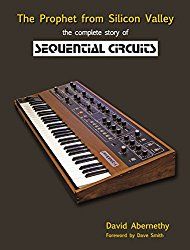
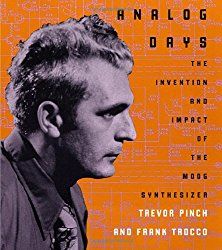
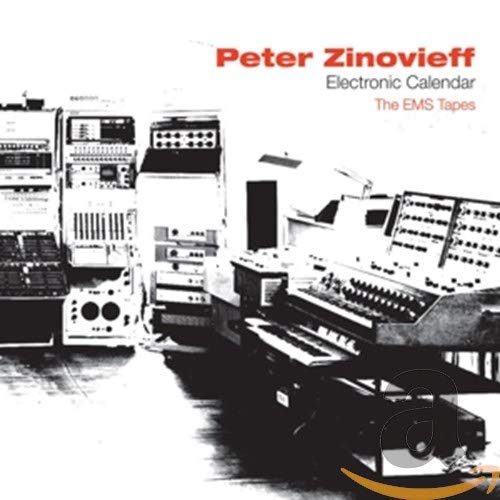
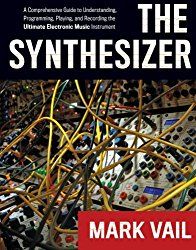
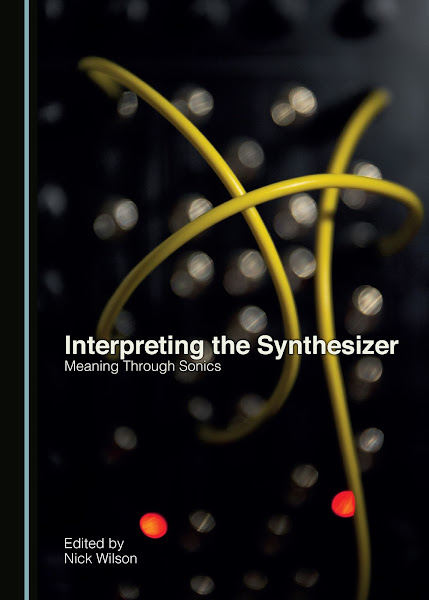
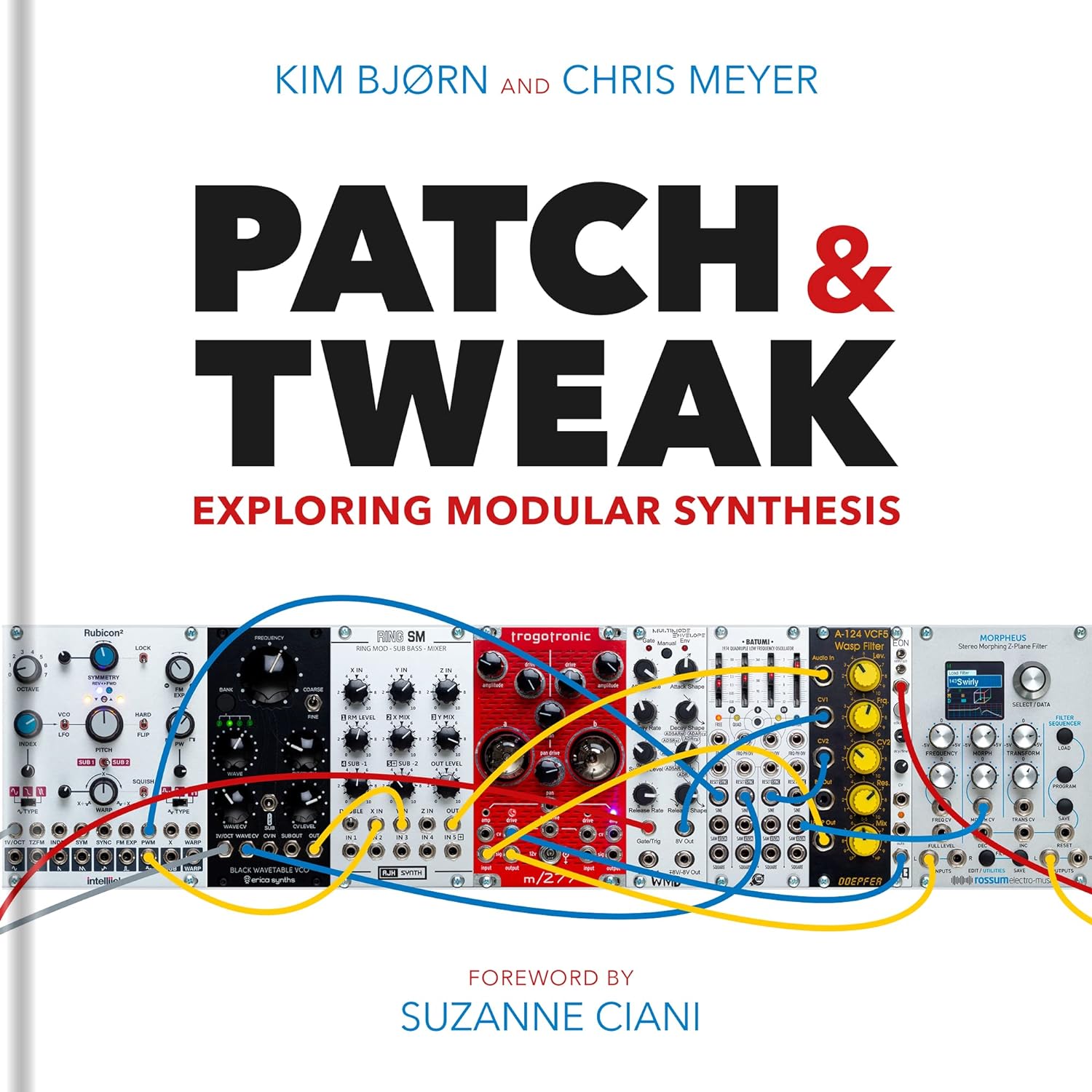

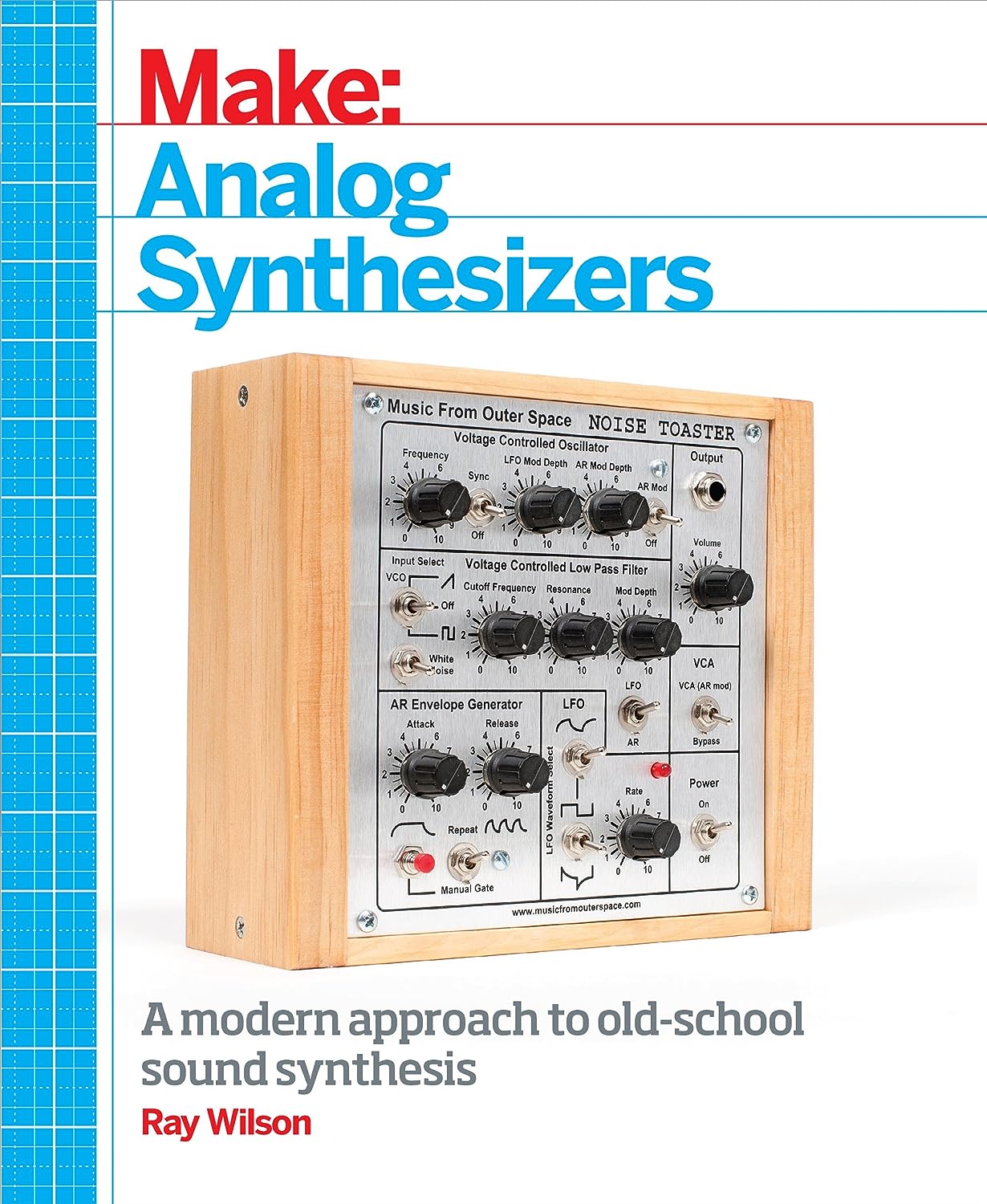
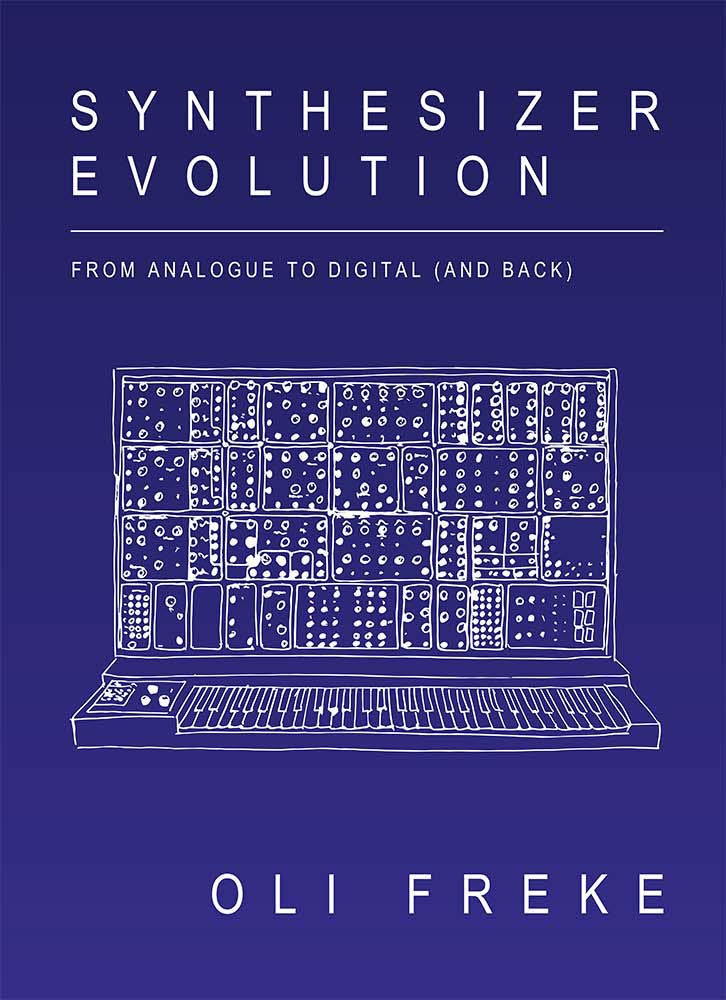
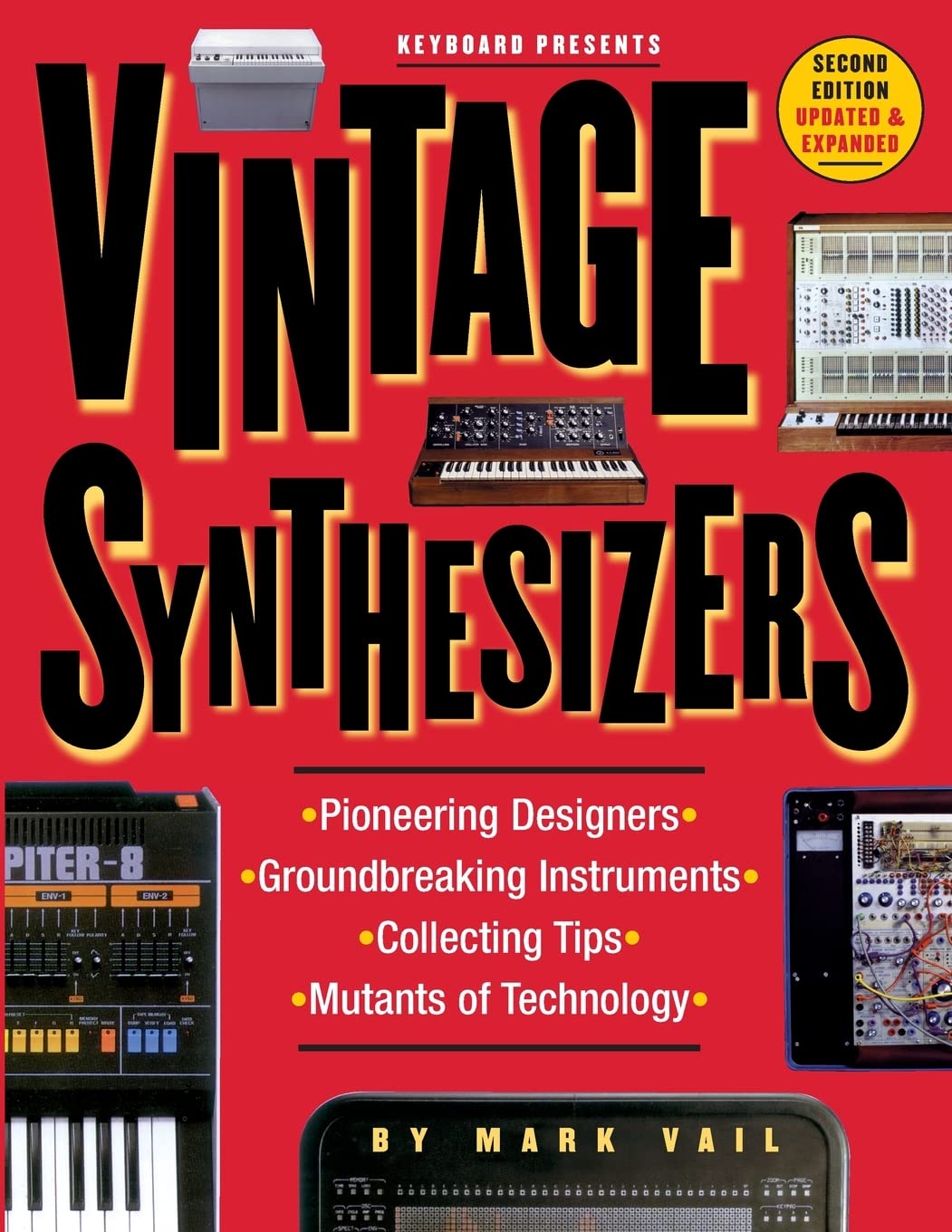
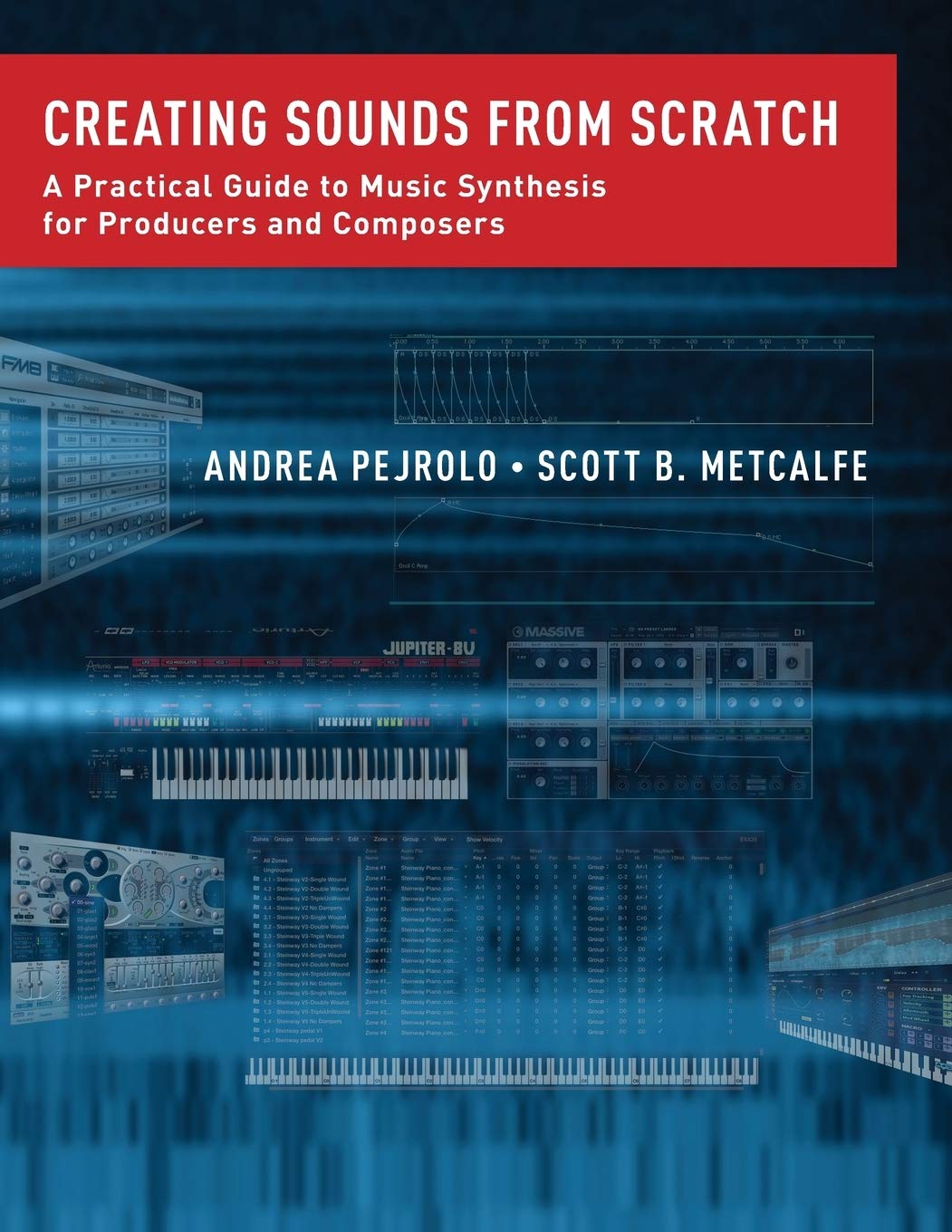
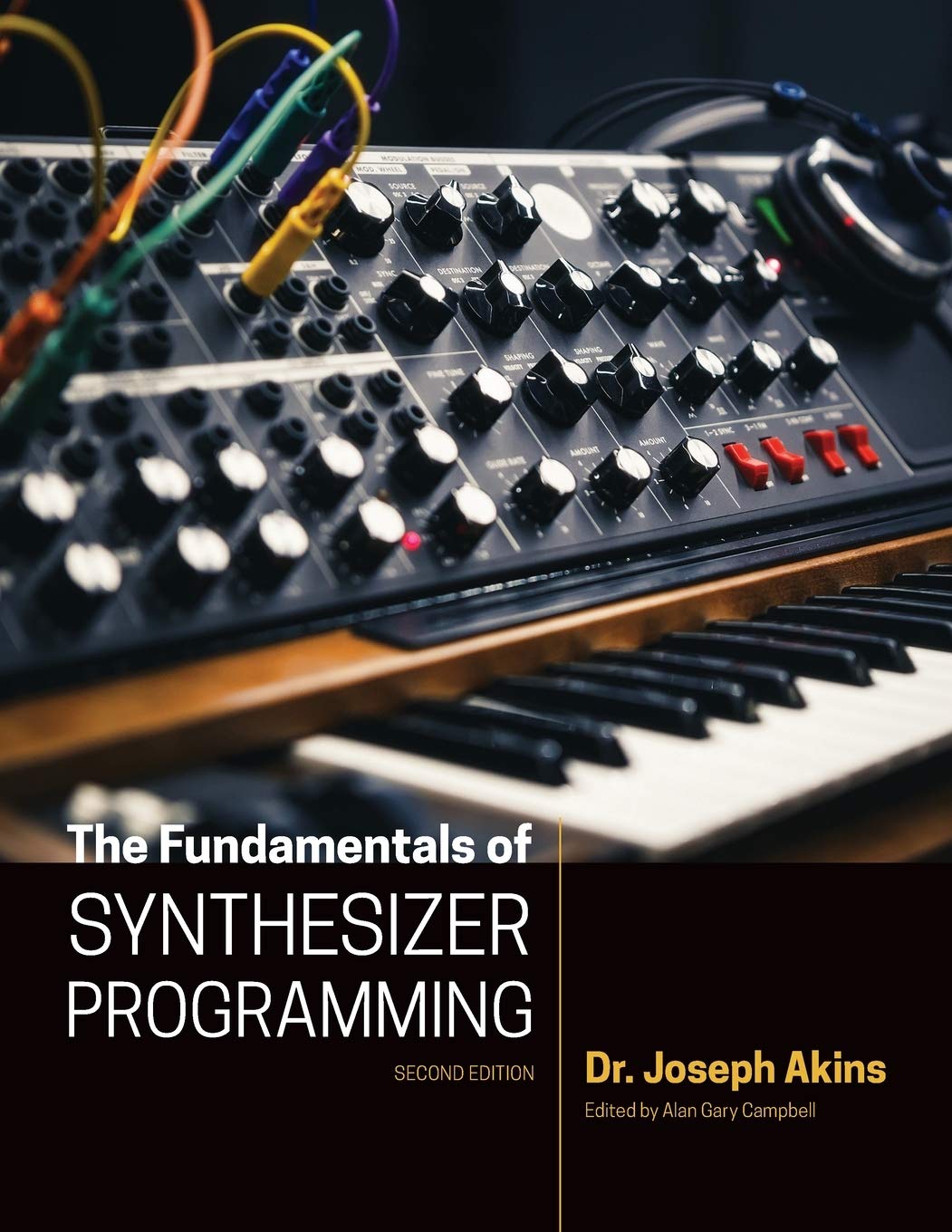

© Matrixsynth - All posts are presented here for informative, historical and educative purposes as applicable within fair use.
MATRIXSYNTH is supported by affiliate links that use cookies to track clickthroughs and sales. See the privacy policy for details.
MATRIXSYNTH - EVERYTHING SYNTH













© Matrixsynth - All posts are presented here for informative, historical and educative purposes as applicable within fair use.
MATRIXSYNTH is supported by affiliate links that use cookies to track clickthroughs and sales. See the privacy policy for details.
MATRIXSYNTH - EVERYTHING SYNTH


















